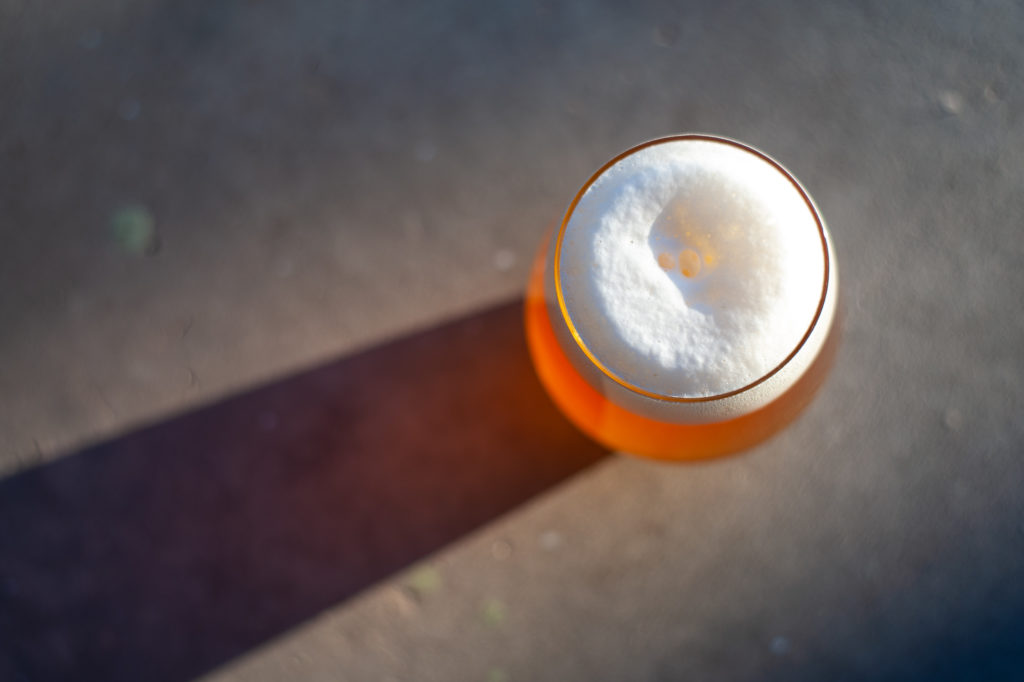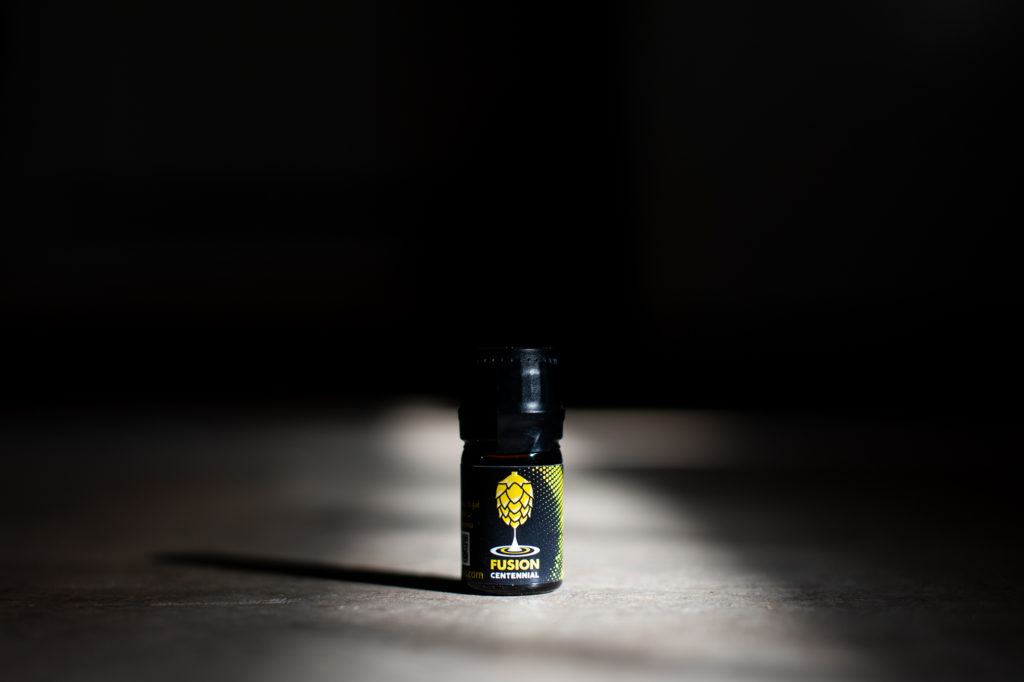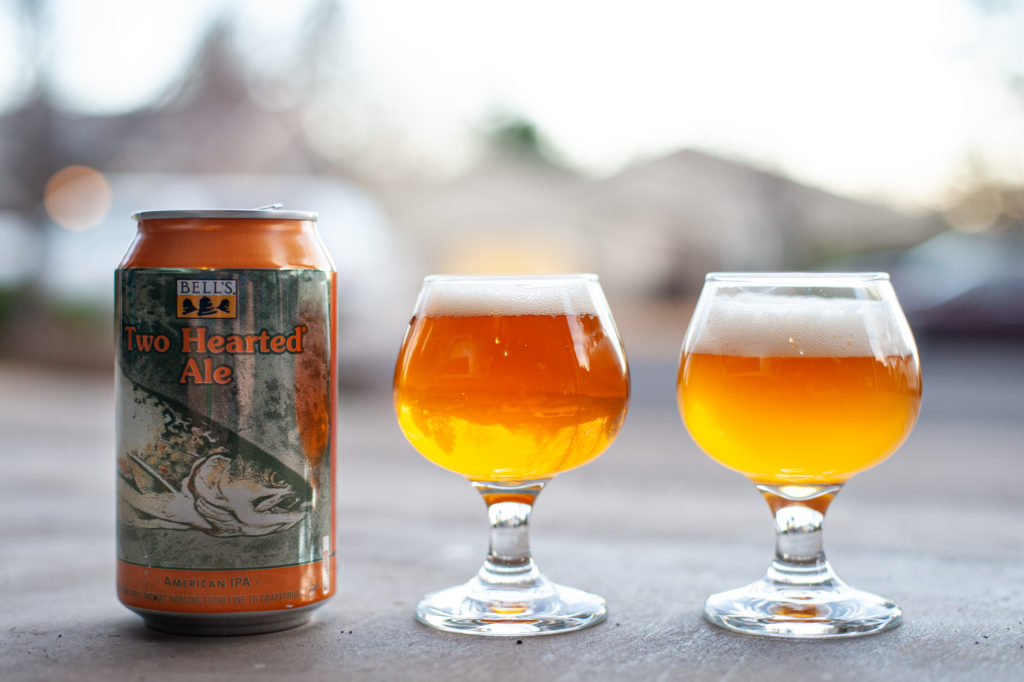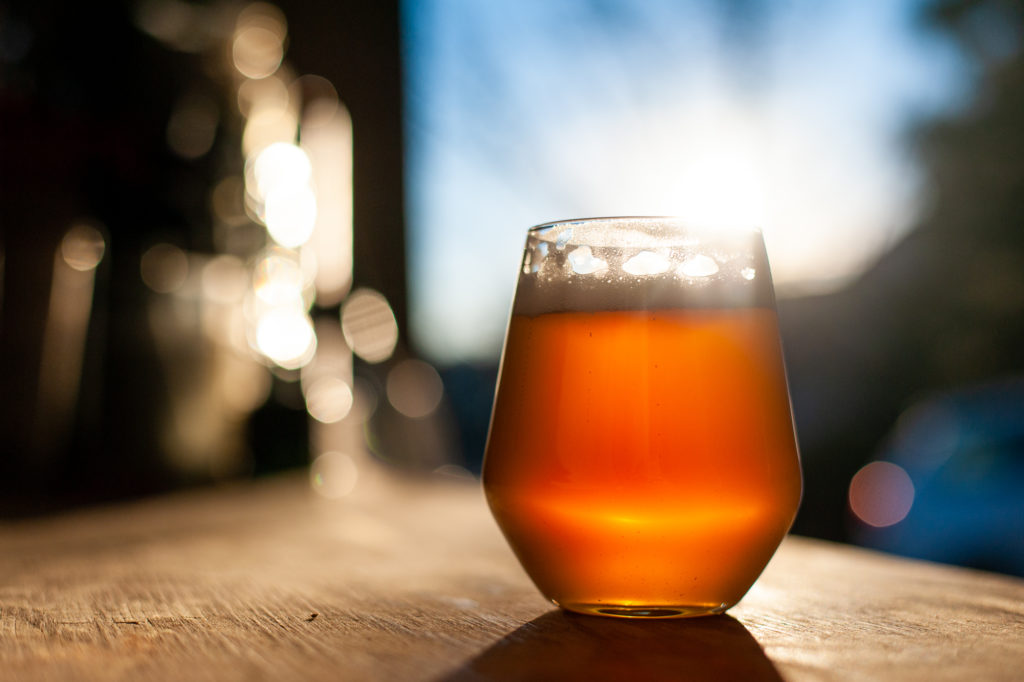The Curious Case of the Two Two Hearted Ales
There are few craft beers more iconic than Bell’s Two Hearted Ale. It’s a genre-defining, exceptionally long-lasting classic that still holds a special place in the heart of beer nerds, even as IPAs continue to evolve away from the characteristics that made it so popular. It’s also one of the most widely available craft beers out there. You can find it in grocery stores and even gas stations across most of these 50 states (though its freshness might not always be what you’d hope).

But not in Oregon. Since moving here, I’ve yet to see it for sale anywhere. In fact, until I visited Austin last October for the F1 race, I hadn’t tasted a Two Hearted in more than a decade—well before I became a homebrewer. But after one sip, I knew it was something I wanted to try to replicate.
Why? It’s just a phenomenally well-balanced beer. The malt profile is rich, but the hops work in harmony with it. It’s a bitter beer, but never as tongue-melting as IPAs got in the late 2000s and early 2010s. And its singleminded focus on Centennial hops ironically helps it stand out in an ever more crowded IPA landscape, even today.
What’s in it?
The Vitals
- Name: Double Bypass
- Category: American IPA (BJCP 21A)
- Method: Full-volume BIAB
- Batch size: 4 gallons
- Mash: 60 minutes @ 154F
- Boil: 60 minutes
- Fermentation: 7 days at 65F
- OG: 1.068
- FG: 1.011
- ABV: 7.5%
- IBU: 60
The Grain
- 8 lbs Mecca Grade Lamonta (89%)
- 12 oz Briess Bonlander Munich (8%)
- 4 oz Franco-Belges Caramel Munich 40 (3%)
The Hops
- 28g Centennial [9% AA] @ 45 minutes (29.6 IBU)
- 28g Centennial @ 30 minutes (25.5 IBU)
- 28g Centennial @ WP (170F, 20 minutes (4.4 IBU)
- 100g Centennial @ DH (5 days, after soft crashing to 60F)
- 0.5mL Oast House Oils Centennial hop terpenes (emulsified in 2.5mL grain alcohol, added after cold crash)
The Rest
- Yeast: 1 packet Lallemand BRY-97, direct pitch
- Water: 5.1 gallons Bend tap w/ 3g calcium chloride, 8g gypsum, 1.5mL lactic acid 88%
- Presumed Water Profile: Ca2+ 150 | Cl– 79 | SO42- 238 | Mash pH 5.35
» BeerXML Download «
How’d it go?
I based my recipe on the one from Bell’s own homebrew shop, which you can find replicated on the AHA website here. But while that recipe uses a combo of Pale 2-Row and Pale Ale malt with a dash of Crystal 40, I opted to work with what I had, which was a lot of local Mecca Grade Lamonta pale malt, some American Munich that needed to get used up, and a tub of Belgian Caramel Munich 40. Same same, but different. The hopping schedule is more or less identical to Bell’s, but adjusted for my batch size and altitude. My dry hop load is slightly higher, but not much. I just like round numbers.
There are two real departures in my recipe.
One is the yeast. Bell’s has its own house strain, which you can only buy through their homebrew shop (or culture from their bottles). Since I didn’t have it on hand and didn’t want to order it, I opted instead for a packet of Lallemand BRY-97, a US-05 alternative that seems to be coming back into vogue after a few years of being shunned. It was my first time using this yeast, and I was pretty impressed with how it performed; I’ll definitely be keeping it my arsenal.

The other is my use of hop terpenes. If you’re not familiar, hop terpenes are basically hop essential oils—the stuff that makes hops taste and smell like hops, extracted from the plant material, purified, and ultra-condensed (read: ultra-potent). I got my terpenes from Oast House Oils, which sells a fairly wide range of varietal-specific hop oils, including Centennial. At $35 for a 5mL bottle, they sound quite expensive until you realize that it takes just 0.5mL to dose a 5-gallon batch.
In general, it seems like pro brewers are using terpenes to bolster their conventional dry-hopping, or to reduce the amount they have to dry-hop in order to reduce waste. I can definitely see that working well based on my results here. The recommended way to use the terpenes is to add them after cold-crashing, emulsifying them in grain alcohol in a 5:1 ratio before dumping them to the keg, so that’s exactly what I did. I was able to assess both the taste and smell of the beer before and after dosing with terpenes, and I can confirm that adding them definitely kicked this batch up a considerable notch—especially in the aroma department, where the citrus and pine smells just leap out of the glass.
(For more in-depth info on terpenes and other hop oil extracts, check out this awesome episode of the Craft Beer & Brewing podcast with New Image Brewing founder Brandon Capps, as well as this excellent article by Scott Janish of Sapwood Cellars.)
So, how does it compare?

Appearance: The real Two Hearted is crystal clear, while mine has a medium haze—definitely not a haze bomb NEIPA, but you can tell it was aggressively dry-hopped, and the terpenes may have also played a role here. O.G. 2H is also a shade darker, but I’m uncertain whether that’s due to the clarity or a real difference in SRM. My head retention is vastly superior, almost mousse-like, with beautiful lacing. The real Two Hearted has a modest cap that dissipates more rapidly and leaves virtually no lacing. (It’s hard to tell if that difference is due to mine being draft vs. the canned Bell’s, though.)
Aroma: Centennial hop aroma just bursts from the glass in my beer. It’s pretty intoxicating. Allison noted that mine is far more hoppy—and especially citrusy—than the original Two Hearted. It’s also quite grassy and a little piney, to my nose. The malt comes through more clearly in Bell’s beer. I’d call it more balanced, overall, and less of a modern IPA, which is what mine smells like. Mine is 0.5% higher in terms of ABV, but that’s not at all apparent in the aroma.
Taste: The original Two Hearted is sweeter than mine, with more of a caramel presence. The bitterness level is roughly the same between the two, but the hop bitterness lingers longer on the tongue in mine (perhaps due to the lower sweetness), giving it an impression of higher overall bitterness. The hop profile is quite different, despite both beers being all Centennial; mine grassier and more obviously citrusy, while Bell’s leans more to the piney side with orangey highlights. I’m sure this has a lot to do with hop selection, crop year, and the way it’s applied in the brewing process. I think both the yeast selection and grain I chose to use played into the differences in malt presence, as well.
Mouthfeel: Aside from the aforementioned difference in the way the bitterness sits on your tongue, these beers have quite similar mouthfeel. There’s not really much to separate them in terms of carbonation or final gravity. I’m gonna call this one a wash.
Yeah, but which do I prefer?

I went into this thinking that there was no way I could make a beer that tastes as good as Two Hearted. I mean, this is an all-time classic American IPA from a master of the craft, right? But after tasting them side-by-side I’m surprised to find that I prefer my own take on the recipe.
Now, I’m not saying I nailed Two Hearted. I definitely didn’t. My beer is more modern, hoppier, less malty, and probably just a touch drier. We’re talking fractional differences here, not an entirely different style. But as it turns out, this is what I want out of an IPA right now.
I’m not the only one, either: at my homebrew club’s December meeting, no fewer than four of my fellow club members came up to me to say that they loved it. One told me it was the best IPA they’d had from anyone, pro or homebrewer, in years. Another said it reminded them how much they love old-school IPAs, so maybe it’s not that far off the old-school Two Hearted mark after all.
So while I failed at recreating Bell’s Two Hearted, I ended up creating my favorite IPA thus far. I’ll call that a win.

Two comments.
First, that picture with the can is amazing. I love the way the background is out of focus but you can see it in focus, upside down, in the beer. Just a fantastic picture.
Second, if you tweet links to your blog posts it will make it easier to see when there are new ones.
Okay I lied, third comment: I can’t wait to brew a hoppy beer again – won’t happen soon due to circumstances but this post really made me miss it.
Thanks, James! I’m working on getting on top of my social presence. Hope to have it a bit more automated soon.
The photo does really show off the clarity of the Bell’s beer vs. my own, doesn’t it?